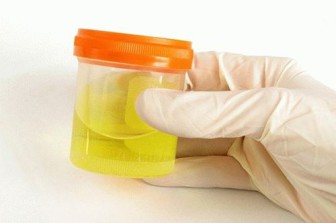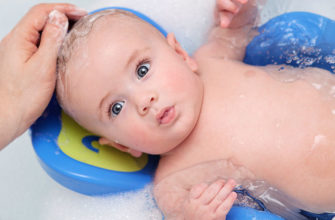The birth of a child in most families is a joyful and long-awaited event. Every mother does not want her beloved baby to be sick and feel unwell. Daily hygienic care, proper nutrition, providing the necessary thermal conditions - all this helps the child grow healthy and strong. But, unfortunately, sometimes the baby begins to get sick, and parents do not always notice the inflammatory process. The urine of an infant can immediately answer many questions related to children's well-being and health. Therefore, during the examination, which takes place 3 months after the birth of the baby, a pediatrician is prescribed a urinalysis.

What should I look for in the results of an analysis of children's urine?
Currently, there are more and more commercial medical institutions with their own laboratories. Many parents turn to them to do an urinalysis of the infant. After that, they receive a sheet in which the results are indicated. Sometimes the standards are opposite the received data, sometimes not. It is worth noting that the norms for an adult are usually indicated, so at first it may seem that the tests are bad. Parents should understand the guidelines for infants so as not to panic in advance.
The main indicators that you should pay attention to are various cells, cylinders, epithelium, mucus and salt crystals.
Quite often, in the results of the analysis of urine, there is a certain content of salts, which should not cause special panic. Crystals of salts in the urine of an infant are often detected by studying urinary sediment. The allocation of salts depends on children's activity, nutritional characteristics. In newborns, an increase in some varieties of these crystals (urate and ammonium urate) is the norm.
Even a small number of white blood cells in the urine of an infant is already dangerous, as it can be caused by diseases of the kidneys and urinary system. Young mothers need to remember that one positive analysis does not make a diagnosis, the child is sent to undergo a second analysis. The child at the next urine collection should be washed well to exclude the possibility of incorrect results. Doctors call several circumstances that can cause the appearance of white blood cells in an infant. One or another type of white blood cells is responsible for various diseases:
- lymphocytes signal connective tissue diseases.
- eosinophils can be a sign of chronic pyelonephritis.
- neutrophils provoke various bacterial infections.
If your child still confirms the presence of white blood cells in the urine, do not despair.Usually, treatment of an infection of the urinary system, bladder at an early stage is carried out by short-term use of antibiotics. Of course, such medications are not desirable for use by young children, but still some drugs have no age contraindications. After the course of treatment, the urine delivery procedure must be repeated. This is because some bacteria have a strong antibiotic resistance. The most famous and accurate is the analysis of urine according to Nechiporenko.
Urine collection
The accuracy of the analysis depends on the correct collection of urine in the infant. It may seem to young parents that they may have difficulties, but this is not so at all. The main requirement is that urine should be in the morning after hygiene procedures.

How to collect urine for a baby: Be sure to use a clean container, delivery time to a medical laboratory - within three hours. Now it remains only to wait for the results. Although you yourself can be the first to evaluate urine by its physical properties: color, transparency and smell.
How to independently evaluate the urine of a child’s physical properties
In the laboratory results of urine analysis, in addition to quantitative indicators, there are items describing its physical characteristics. However, the health of your child can be assessed independently, observing the number of urinations per day, color, smell of urine. To do this, we give normal indicators for children.
Urine color
The color of urine depends on the age of the child and the nature of his nutrition. The older a person becomes, the more saturated the shade it becomes. In addition, the use of certain foods, as well as the use of certain medications can contribute to the staining of urine. Therefore, if the baby eats breast milk, refrain from previously unused foods. We remind you that the most famous dyes are beets, carrots, citrus fruits.
In normal condition, the color of urine in an infant is usually very light in color, almost white. As it grows older, it changes to straw yellow. If the urine of a baby is dark brown, it means that it has a high bilirubin content. This is common, as young children often suffer from jaundice at birth. You should consult a doctor if your baby’s urine is different from the usual color.
- The dark yellow color is due to the increased concentration of bile pigments.
- Red urine occurs with a heart attack, kidney injury due to the release of a high concentration of red blood cells.
- Orange indicates uraturia (high salt content)
- All shades of green urine can be caused by obstructive jaundice.
Turbidity of urine

Urine transparency is no less important than its color. In laboratory analyzes, it is assessed as complete and incomplete. Within two hours after collection, the urine is transparent and only then a cloudy cloud begins to form in it. If you see that the urine of the child is opaque, do not rush to take it for analysis. Make sure that the collection container is well washed, then repeat the hygiene procedures for the child. If at the next collection the urine remains cloudy, then a laboratory report and the necessary treatment are required.
There is a simple household way to check urine for identification of exactly which substances caused its turbidity. Urine should be collected in a clean jar, put it in a pot filled with water, then warm up a little. Now you can evaluate the result:
- The amount and nature of turbidity has not changed - an inflammatory process in the body is possible.
- Urine has become more transparent - a high content of oxalate salts.
- The amount of turbidity increased - the presence of phosphate salts in the urine.
If you get the first result, you need to take a urine test in and consult a doctor.The last two - do not cause concern. If the color and transparency of urine is assessed visually, another indicator is by smell.
Urine smell
The smell of baby urine can also help determine the inflammatory process in the initial stage. Children's urine should be monitored daily, because an infant cannot, because of age, express in words that something is bothering him.
The normal smell of urine in an infant is unsharp, changing in accordance with the food intake. In children on artificial feeding, he has a large concentration.
If the child's urine has acquired the smell of acetone, feces, then this may be a sign of an infection, you should immediately contact a pediatrician.
Daily monitoring of the urine of a small child allows you to notice the onset of symptoms of various infections and diseases. This is very important, since a very narrow list of drugs is provided for infants. Treatment in the early stages will avoid taking strong antibiotics and anti-inflammatory drugs.
https://www.youtube.com/watch?v=UE3WR9YkxFE









And if a one-year-old child has almost no urine, the color is light green. Is this the norm or what?
Hope this needs to consult a pediatrician.